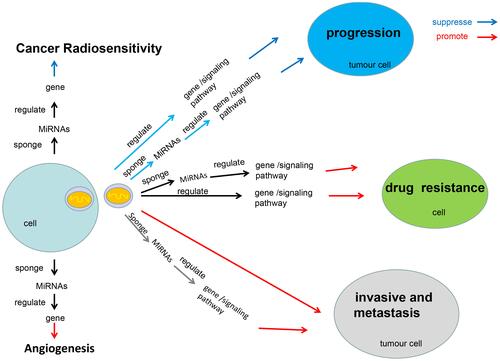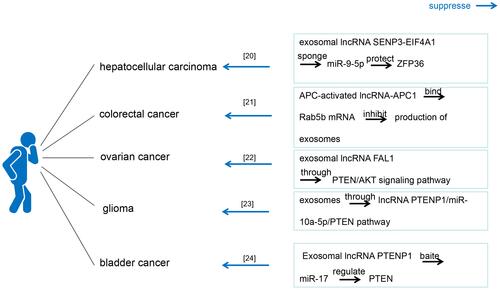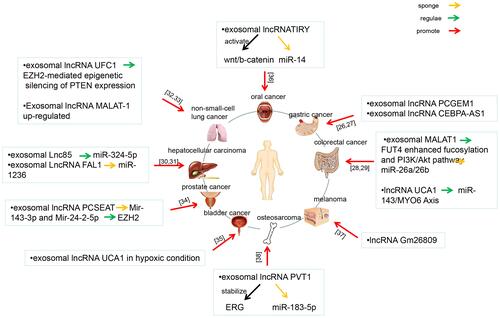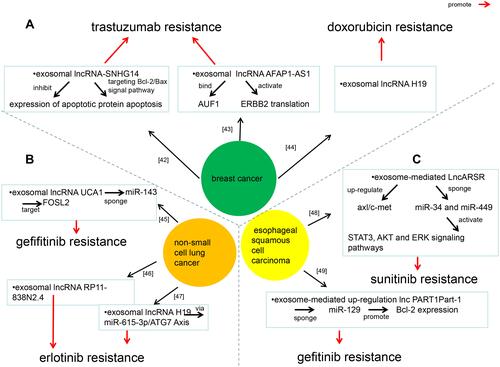Figures & data
Figure 1 The molecular mechanism of exosomal lncRNAs in cancers. This figure summarizes the molecular mechanism of exosomal lncRNAs regulate cancer cells proliferation, cancer invasion and metastasis, cancer angiogenesis, chemotherapy drug resistance and radiosensitivity, respectively.

Figure 2 Network illustrating exosomal lncRNAs regulate cancer cells proliferation. This figure summarizes the literatures related to exosomal lncRNAs regulate cancer cells proliferation published in recent years, and shows the constructed network diagram of the relationships between exosomal lncRNAs and cancer cells proliferation. These cancers include hepatocellular cancer, colorectal cancer, ovarian cancer, glioma and bladder cancer.

Figure 3 Network illustrating exosomal lncRNAs regulate cancer invasion and metastasis. This figure summarizes the literatures related to exosomal lncRNAs regulate cancers invasion and metastasis published in recent years, and shows the constructed network diagram of the relationships between exosomal lncRNAs and cancers invasion and metastasis. These cancers include oral cancer, gastric cancer, colorectal cancer, melanoma, osteosarcoma, bladder cancer, prostate cancer, hepatocellular cancer and non-small-cell lung cancer.

Figure 4 Network illustrating exosomal lncRNAs regulate chemotherapy drug resistance. This figure summarizes the literatures related to exosomal lncRNAs regulate chemotherapy drug resistance published in recent years, and shows the constructed network diagram of the relationships between exosomal lncRNAs and chemotherapy drug resistance. The (A–C) represents breast cancer, non-small cell lung cancer and esophageal squamous cell cancer, respectively.

Table 1 Exosomal lncRNAs in Body Fluids of Human Cancers
